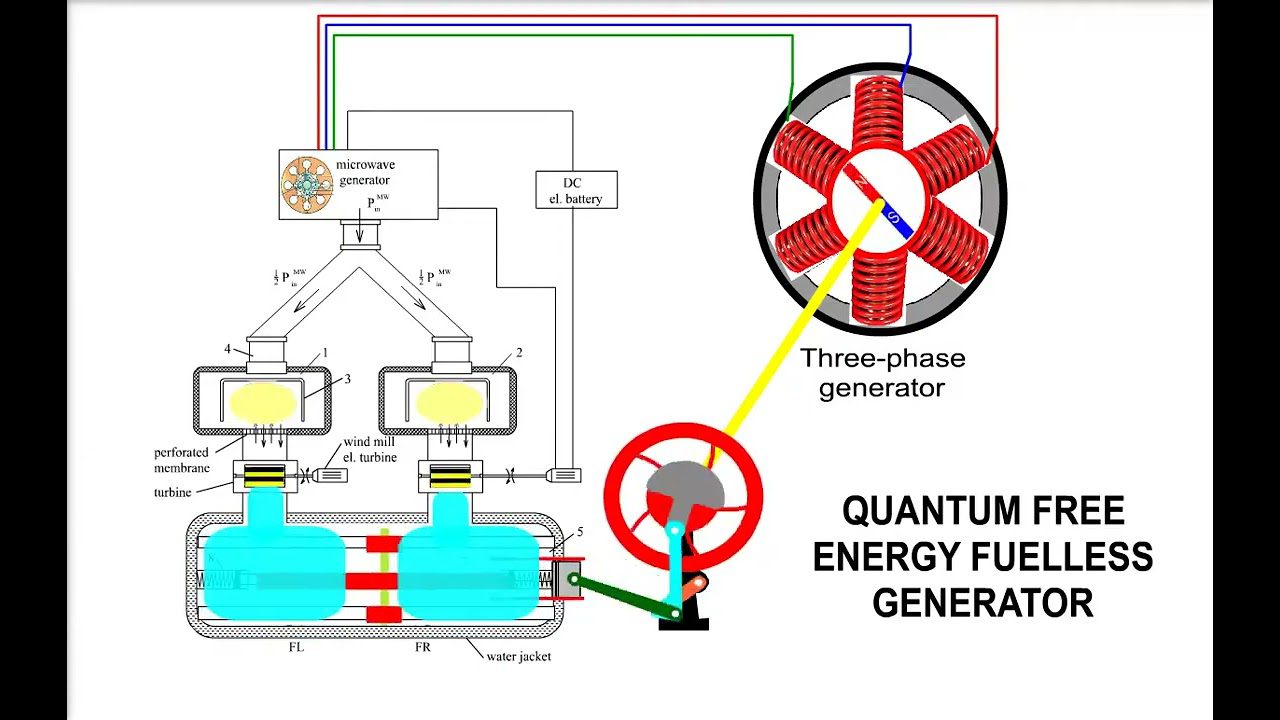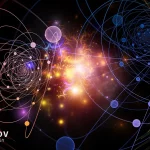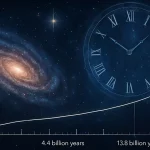Abstract
General Quantum Mechanics (GQM) extends beyond conventional physics by introducing a set of world constants that govern the structure and dynamics of the universe. These constants, discovered through theoretical derivations and empirical observations, include minimum quantum accelerations, force ratios, velocities, and spatial dimensions for both the Proton Matter Universe (PMU) and Electron Matter Universe (EMU). This paper summarizes these constants, their values, and their roles in cosmic phenomena, providing a unified framework that challenges mainstream theories like General Relativity and the Standard Model.
Introduction
Contemporary physics relies on a limited set of fundamental constants: Planck’s constant h, the speed of light c, the elementary charge e, and the gravitational constant G. However, GQM posits that the universe comprises two intertwined realms—the PMU (comprising atoms, stars, galaxies, etc.) and the EMU (the space-continuum)—each with distinct quantum parameters. These worlds exhibit electron-proton duality, where the proton is a “developed” counterpart of the electron. GQM introduces additional world constants to explain phenomena such as galactic rotation curves, space probe anomalies, and the universe’s energy balance. These constants ensure symmetry, stability, and quantum boundaries, often manifesting as free energy sources when physical laws conflict with them.
Key World Constants in GQM
The following table enumerates the primary world constants, their definitions, approximate values (in CGS units unless specified), and applications. Values are derived from cosmic scales, such as the universe’s radius, and validated against observations like Pioneer anomalies and galaxy flattening. The table has been updated to include the fundamental force ratio constants Ae and Ap , which extend the electron-proton duality framework by quantifying electromagnetic-to-gravitational imbalances for like particles and define the scale of the electron and proton universe.
| Constant | Definition | Value | Role and Applications |
|---|---|---|---|
| A0,p | Minimum quantum acceleration in the PMU, analogous to h. Valid for straight-line motion on the 2D surface of the PMU. | 8.746×10-8cm/s² | Explains Pioneer space probe anomalies (observed acceleration matches exactly). Affects motion of bodies moving forward/backward relative to an observer. Derived as a0,p=c²/Run,p. Ensures quantum stability; violates energy conservation if needed to preserve constancy. |
| A0,e | Minimum quantum acceleration in the EMU, valid for rotational motion in the 3D space-continuum (X ⊥ Y ⊥ Z). | 0.487×10-9cm/s² | Accounts for flattening of galactic rotation curves (e.g., Milky Way Galaxy). Explains high orbital velocities of satellite galaxies like the Large Magellanic Cloud (LMC) at V≈200km/s. Influences precession of Mercury’s orbit and cosmic expansion interpretations. |
| Ae,p | Ratio of electromagnetic force to gravitational force between an electron and proton. | 2.27×1039(dimensionless) | Fundamental duality parameter. Used in deriving minimum quantum velocity Vmin,p=c/√Ae,p Highlights the dominance of electromagnetic forces at quantum scales over gravity. Links micro- and macro-scales: Run,p=Ae,pRp. |
| Ae | Ratio of electromagnetic force to gravitational force between two electrons. | 4.17×1042(dimensionless) | Quantifies force imbalance at electron scales, emphasizing electromagnetic dominance in micro-world. Derived as Ae=e2/(Gme2). Contributes to electron-proton duality via Ae,p=√AeAp. Explains stability in quantum free energy systems and plasma behaviors. |
| Ap | Ratio of electromagnetic force to gravitational force between two protons. | 1.24×1036(dimensionless) | Quantifies force imbalance at proton scales, relevant for nuclear and cosmic structures. Derived as Ap=e2/(GMp3). Supports macro-scale symmetries in PMU, influencing galaxy formation and gravitational anomalies without dark matter. |
| Vmin,p | Minimum quantum velocity in the PMU. | =0.63×10-9cm/s(derived from c/√(Ae,p) | Sets lower bound for velocities in proton-based systems. Related to cosmic symmetries and energy balances. |
| Run,p | Radius of the Proton Matter Universe (2D spherical manifold). | 0.654×1028cm | Defines the scale of the “visible” universe (galaxies, etc.). Used in a0,p calculation. Coincides with gravitational radius rg for stability: Run,p=2πrg,p. |
| Run,e | Radius of the Electron Matter Universe (3D spherical manifold). | 1.84×1030cm | Represents the space-continuum. Influences rotational dynamics and quantum boundaries. |
| rg | Quantum gravitational radius (boundary) for material objects. | For PMU: 0.416×1028cm (general: rg=2GM/c2) | Smallest possible spatial dimension. Ensures universe stability; PMU radius equals πrg. Acts as a free energy source by affecting motion near boundaries. |
| E0,p | Derived constant linking Planck’s h and c. | h/c(erg s / cm/s) | Connects quantum action to acceleration: E0,p=h/c→ae,p. Part of momentum and energy derivations. |
| c | Speed of light, expressed as a product of other constants. | 3×1010cm/s | Reformulated in GQM: c = (2π². e² / hₚ) √(Mₚ / mₑ), where hₚ=6.62×10-27erg s, Mₚ proton mass, mₑ electron mass. Represents maximum velocity symmetry. |
These constants are interconnected; for instance, the total energy of the universe is zero (Eₜₒₜ = Eₖᵢₙ + Eg = 0), with Eₖᵢₙ=Eₖᵢₙ = Mᵤₙ,ₚc²/2≈2.52×1076erg, balanced by gravitational potential. Violations of laws like energy conservation occur to preserve constants, enabling phenomena like quantum free energy. The addition of Ae and Ap refines the duality model, showing how force ratios scale across particle types and influence quantum borders.
Derivations of Key Constants
Derivations follow GQM’s electron-proton duality, symmetries, and fundamental principles. They are primarily from cosmological scales and particle parameters.
Minimum Quantum Acceleration a0,p
Represents the minimum acceleration in PMU for straight-line motion.
Derivation: From cosmic scale:
Alternatively, from quantum action:
(where k is symmetry factor). Ensures constancy over energy conservation.
Minimum Quantum Acceleration a0,e
For rotational motion in EMU.
Derivation: From electron parameters:
Re influences galactic dynamics without dark matter.
Force Ratio Ae,p
Electromagnetic-to-gravitational ratio between electron and proton.
Derivation: From forces at equilibrium:
Links duality: proton as developed electron.
Force Ratio Ae
For two electrons.
Derivation:
Dominates micro-scales.
Force Ratio Ap
For two protons.
Derivation:
Relevant for nuclear/macro structures. Relation: Ae,p=√AeAp.
Minimum Quantum Velocity Vmin,p
Lower velocity bound in PMU.
Derivation: From duality:
Radius of PMU Run,p
Scale of visible universe.
Derivation: From duality scaling:
(Rp proton radius). Alternatively:
Radius of EMU Run,e
Space-continuum scale.
Derivation: From symmetry:
Gravitational Radius rg
Minimum spatial dimension.
Derivation: General:
For PMU universe (Mun,p≈1.93 × 1055g):
Stability: Run,p=2πrg.
Linking Constant E0,p
Connects h and c.
Derivation:
Used in momentum: p = E0,p a0,p.
Speed of Light c
Maximum velocity.
Derivation: Reformulated:
Reflects symmetries for life-supporting universe.
Cosmic Applications
- Pioneer Anomaly: Exact match with a0,p, not gravitational.
- Galactic Flattening: Due to a0,e, eliminating the need for dark matter.
- Mercury Precession: Partial contribution from a0,e, refining GR predictions.
- Universe Expansion: Reinterprets red shifts without dark energy; constants ensure absolute relativity relative to Earth-based observers.
- Energy Balance: Constants act as free energy sources near quantum boundaries, maintaining zero total energy and eternal activity.
- Force Duality: Ae and Ap explain why gravity dominates at large scales while electromagnetism rules quantum realms, supporting GQM’s critique of unified field theories.
Conclusion
The world constants in GQM provide a comprehensive, symmetric model of the universe, resolving anomalies unexplained by mainstream physics. They underscore the quantum nature of reality, where principles like absolute relativity and electron-proton duality prevail. Future experiments, such as refined space probe data or galaxy observations, could validate these constants further. This framework not only unifies micro- and macro-scales but also opens avenues for quantum free energy technologies.
References
- Chukanov, K. (2006). General Quantum Mechanics IV: Addendum to Volume III (“Universe – That’s Simple!”).
- Related volumes: GQM I-III (1994–2006).
- Chukanov, K. (2009). General Quantum Mechanics V: God Reveals the Secrets of Gravitation & More.
- Chukanov, K. (2009). General Quantum Mechanics VI: The Divine Design of Our Unique Universe.











